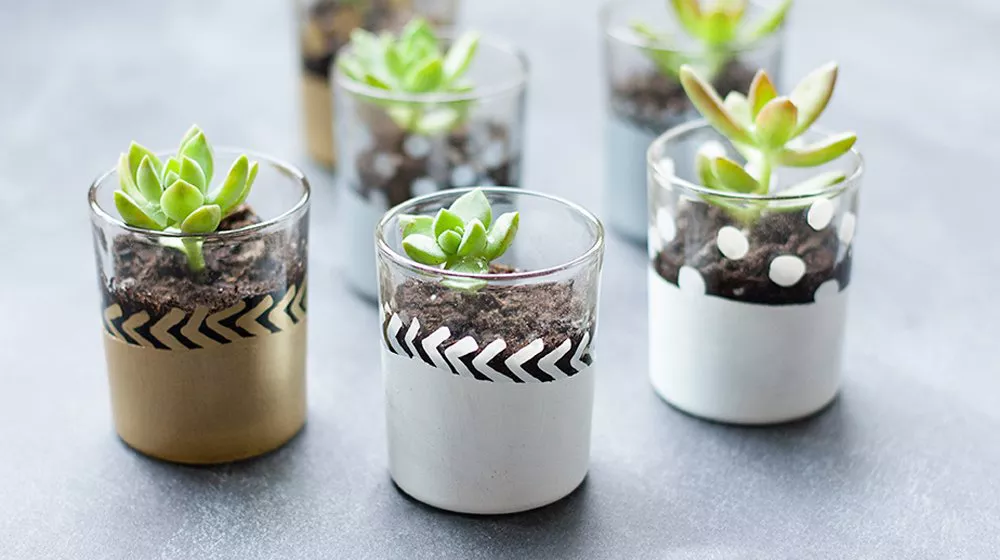Succulents, with their unique beauty and remarkable adaptability, have become a favorite among plant enthusiasts and gardeners alike. While they can thrive in various growing mediums, planting succulents in sand is a popular choice due to its excellent drainage properties and the ability to replicate the natural habitats of many succulent species. In this comprehensive guide, we will explore the steps and considerations for successfully planting and caring for succulents in sand, helping you create a thriving succulent garden.
1. Why Choose Sand for Succulents?
Before we delve into the intricacies of planting succulents in sand, it’s essential to understand why this medium is favored by succulent enthusiasts:
Excellent Drainage: Sand is exceptionally well-draining, preventing waterlogged roots, which is a common issue for succulents in traditional potting mixes.
Replicating Natural Conditions: Many succulent species originate from arid regions with sandy or gravelly soil. Planting them in sand helps mimic their natural habitat and encourages healthy growth.
Aesthetic Appeal: Sand provides a clean, minimalist look that complements the sleek and sculptural appearance of succulents. It’s a popular choice for both indoor and outdoor succulent gardens.
2. Selecting the Right Sand
Choosing the right type of sand is crucial for the success of your succulent planting project. Not all sands are created equal, and certain types may be more suitable than others.
Coarse Sand: Coarse sand, often referred to as builder’s sand or horticultural sand, is an excellent choice for succulents. It provides good drainage while allowing air circulation around the roots.
Avoid Fine Play Sand: Fine play sand, typically used in children’s sandboxes, is not suitable for succulents. It compacts easily and retains moisture, which can lead to root rot.
Perlite or Pumice: Some succulent enthusiasts prefer to mix coarse sand with perlite or pumice to further enhance drainage and aeration.
3. Preparing Your Sand Mix
To create an optimal sand mix for planting succulents, follow these steps:
Gather Your Materials: You will need coarse sand, potting soil, and optional additives like perlite or pumice.
Proportions: Mix the coarse sand with potting soil in a ratio of approximately 1:1. Adjust the mixture as needed based on the specific requirements of your succulents. For additional drainage and aeration, you can add up to 25% perlite or pumice to the mix.
Thoroughly Blend: Use a large container or wheelbarrow to blend the materials thoroughly. Ensure that the mixture is evenly distributed, creating a well-draining yet nutrient-rich substrate for your succulents.
4. Planting Succulents in Sand: Step-by-Step
Now that you have prepared your succulent-friendly sand mix, it’s time to get your hands dirty and start planting:
Select Suitable Containers: Choose containers or pots with drainage holes to prevent water accumulation at the root zone. Terracotta pots, wooden boxes, and hypertufa containers work well for planting succulents.
Prepare the Container: Fill the container with your sand and potting soil mix, leaving enough space at the top for planting your succulents. Ensure that the mix is level and settled.
Choose Healthy Succulents: Select healthy succulents for planting. Check for signs of disease or overwatering, and avoid any succulents with damaged or rotting roots.
Planting Technique:
- Gently remove the succulent from its nursery pot, taking care not to damage the roots or stems.
- Dig a small hole in the sand mix and place the succulent’s roots into it.
- Fill in the hole with the sand mix, ensuring that the plant is stable and upright.
Spacing: Leave adequate spacing between succulents to allow for growth and proper air circulation. Overcrowding can lead to issues like rot and competition for nutrients.
Watering: Water the newly planted succulents sparingly, using a gentle stream of water to settle the soil around the roots. Avoid drenching the plants; you can always add more water if needed.
5. Caring for Succulents Planted in Sand
Maintaining healthy succulents in a sandy environment requires attention to their specific needs:
Sunlight: Succulents thrive in bright, indirect sunlight or partial shade, depending on the species. Provide them with at least 6 hours of sunlight per day for optimal growth.
Watering: While sand provides excellent drainage, it’s crucial not to overwater succulents. Water sparingly and only when the soil has completely dried out. Ensure that excess water drains freely from the container.
Fertilization: Fertilize your succulents sparingly during the growing season, typically in spring and summer. Use a balanced, diluted liquid fertilizer and apply it according to the manufacturer’s instructions.
Pruning and Maintenance: Regularly inspect your succulents for dead or yellowing leaves. Remove these to encourage new growth and prevent pests and diseases.
Pest and Disease Control: Keep an eye out for common succulent pests like aphids and mealybugs. Treat any infestations promptly to protect your plants.
6. Overwintering Succulents in Sand
If you live in a region with cold winters, you may need to take special precautions to protect your succulents planted in sand:
Bring Indoors: Many succulents are not frost-tolerant. Before the first frost, consider moving potted succulents indoors or into a sheltered area to protect them from extreme cold.
Mulch: Apply a layer of mulch or straw around the base of your succulents to provide some insulation from cold temperatures.
Reduce Watering: During the dormant season (typically in fall and winter), succulents require less water. Allow the soil to dry out more thoroughly between watering sessions.
Conclusion
Planting succulents in sand offers an ideal environment for these resilient and captivating plants to thrive. The well-draining properties of sand help prevent common issues like root rot, while the sandy substrate mimics the natural habitats of many succulent species.
By selecting the right type of sand, preparing a suitable sand mix, and following proper planting and care techniques, you can enjoy healthy and vibrant succulents that will grace your indoor and outdoor spaces with their unique beauty for years to come. Remember that each succulent species may have its own specific requirements, so be sure to research and cater to the needs of your individual plants for the best results.


